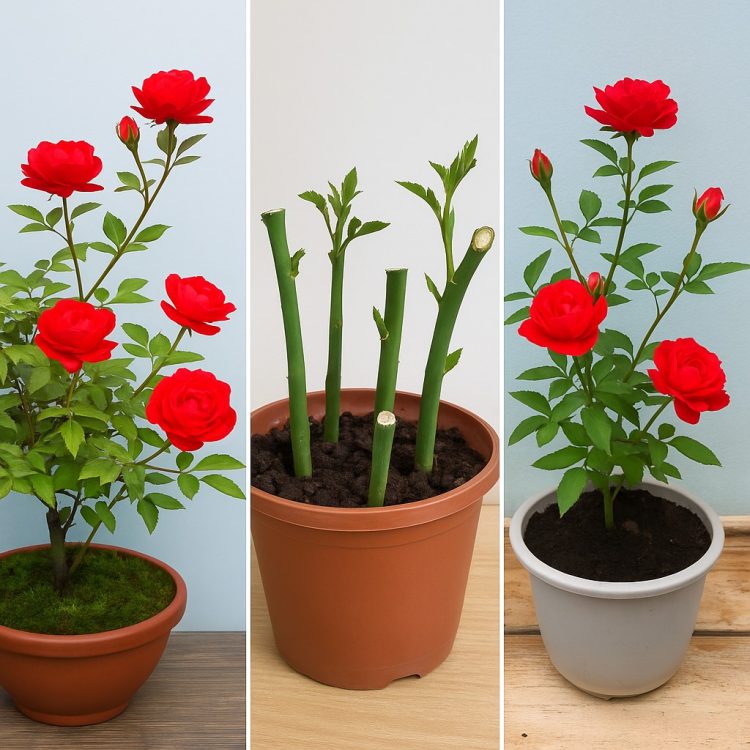Step-by-Step Guide: Propagating Roses with Rice Water
Step 1: Make the Rice Water
Take half a cup of uncooked white rice and place it in a bowl. Add one cup of water and stir or shake for about 1–2 minutes until the water turns cloudy. This helps release the beneficial nutrients and starches into the water.
Strain the rice out and set the milky liquid aside. This will serve as your rooting solution.
Step 2: Prepare the Rose Cuttings
Choose a healthy rose stem from an existing plant. Make a clean diagonal cut just below a node using a sanitized knife or pruning shears. Remove the leaves from the bottom half of the stem and trim off any flowers or buds to focus energy on root formation.
Each cutting should be about 4 to 6 inches long with at least two leaf nodes.
Step 3: Soak the Cuttings in Rice Water
Place the prepared rose cuttings in the jar of rice water, submerging the bottom ends about 2 inches deep. Let them soak for 12 to 24 hours. This allows the nutrients to penetrate the plant tissue and stimulate rooting.
If you’re short on time, even a 30-minute soak can help, though longer is better.
Step 4: Plant the Cuttings
After soaking, plant each cutting in a small container filled with moist, well-draining potting soil. You can use a mix of garden soil, perlite, and coco peat or compost for optimal results.
Make a small hole with a pencil or stick and insert the cutting, then press the soil gently around it to secure.
Step 5: Maintain Moisture and Humidity
To help the cutting retain moisture, cover the pot with a clear plastic bag or dome. This creates a mini greenhouse effect that keeps humidity high, which is vital for unrooted cuttings.
Place the container in a bright spot with indirect sunlight. Avoid full sun, which may cause the cuttings to dry out too quickly.
How Long Until Roots Form?
Rose cuttings typically begin forming roots in 2 to 4 weeks. Signs of success include new leaf growth and resistance when you gently tug on the stem, indicating roots are anchoring the plant.
Once roots are well established, you can transplant the new rose plant into a larger pot or directly into your garden.
Additional Tips for Success
Change the rice water if using it over multiple days to prevent fermentation or spoilage.
Avoid overwatering the soil once planted—keep it moist, not soggy.
Use healthy parent plants to ensure the cuttings are disease-free and robust.
Try brown rice for more nutrients, but be aware it ferments faster than white rice.
Final Thoughts
Propagating roses doesn’t have to be complicated or expensive. With just a small amount of rice and water, you can create a natural rooting solution that supports healthy growth and increases your chances of success.
This technique is perfect for beginners and experienced gardeners alike. It’s safe, affordable, and surprisingly effective—proof that sometimes, the simplest solutions are the best.
So, the next time you’re preparing rice, don’t throw out the water—use it to grow beautiful roses instead.
